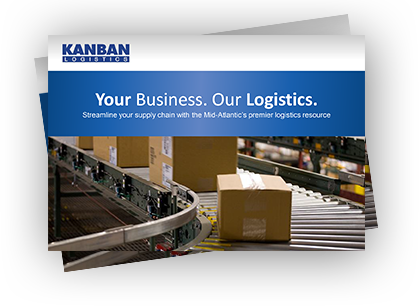When you think about warehousing of your products, you likely think of three main options: doing it yourself, partnering with a 3PL in a shared environment, or partnering with a 3PL for contract/dedicated services. Importantly, however, there can be overlap between these options. In this article, we’ll look at one such overlap in the form of using dedicated warehouse space within a 3PL’s larger shared building.
Basic forms of warehousing
 As mentioned above, there are three main types of warehousing.
As mentioned above, there are three main types of warehousing.
- The DIY method. Your most expensive option, you can choose to simply go it alone and build or rent a warehouse yourself. From there, you’ll need to staff it, pay for the equipment, the warehouse management system and other technologies.
- The dedicated 3PL model. With this option – known as dedicated or contract warehousing – you pay a 3PL to fully dedicate one (or more) of its warehouses to your operation. Or, you can lease the facility(s) yourself and run it yourself or hire a 3PL provider to run it for you. In either case, your 3PL can provide the staff, equipment and systems needed – saving you significant amounts of time and money and acquiring these yourself.
- The shared 3PL model. The most common form of modern warehousing, shared warehousing enables you to share space in a 3PL’s warehouse alongside other “tenants.” Instead of the large overhead associated with the DIY and contract warehouse models, you simply pay only for the space and services you require.
Dedicated warehouse space within a building
Some 3PLs, like Kanban Logistics, allow for overlap between the shared and dedicated warehousing models. With this overlap, a shared warehouse can have a section(s) devoted to a dedicated operation.
To illustrate, let’s say that a 3PL provider has a 200,000-square-foot warehouse. Much of that space is reserved for shared operations. But your company may want to lock in 50,000 square feet of that space for you’re a dedicated operation.
Many 3PLs will be amenable to such an arrangement. It benefits the 3PL because it locks in a commitment to a set amount of space and services.
It’s advantageous for you as you’ll likely be paying a much lower rate than you would by leasing a full building yourself. You also enjoy significant savings by paying only a portion of the building’s full costs for maintenance, energy, cleaning, etc.
You can choose to equip, staff and operate that space on your own. Or, you can hire the 3PL provider to handle those items for you. Either way, you have a fully dedicated operation that is devoted solely to your business.
What types of companies are good fits for contract warehousing?
There are a number of factors that can help determine whether your operation is a good fit for contract warehousing. Most importantly, you need consistent, predictable sales volumes that warrant commitment to the space and services over a longer term. If your volumes fluctuate, you may end up paying for space and services that you’re not using.
Not surprisingly, however, the decision will ultimately come down to costs. Contract warehousing is attractive to companies that like the predictability of a set contracted rate for their operations instead of the fluctuating rates associated with shared warehousing. Additionally, companies with operations large enough to warrant their own facilities may prefer to contract with a 3PL that owns a building because there’s less risk involved (it’s relatively easy to change 3PLs, much more difficult to sell a warehouse that you own).
What to look for in a contract warehousing provider
Contract warehousing is a partnership. As with any partnership, you want to feel that you’ll be happy with your partner before you sign on the dotted line. This means getting to know your 3PL partner: touring the facility, meeting with leadership and associates (the people actually running your operations) and talking to other customers.
From there, the things you need to look for are not all that different from shared warehousing providers. Some examples include:
Warehouse management system (WMS): you want to make sure that your 3PL partner has a robust WMS that can manage your inventory, orders, and reporting the way you want them managed. (NOTE: some contracting warehousing arrangements involve 3PL use of the customer’s WMS.)
Temperature-controlled capabilities: if your products have temperature- or climate-related needs, you want to make sure your 3PL partner can protect product integrity within the warehouse.
Strategic location: you want to choose a 3PL with a location that enables fast distribution to your customers – whether retailers, manufacturers, or eCommerce customers.
Turn to Kanban Logistics for a NC Dedicated Warehouse
If you’re looking for dedicated warehouse space in the burgeoning Eastern NC market, Kanban Logistics has got you covered. You can partner with us to take up an entire warehouse for a contract operation, or utilize a portion of one of our shared warehouses. We also have a pad in place for the building of a warehouse in Rocky Mount, NC. To learn more about our warehousing and distribution capabilities, contact Kanban today.
Never Miss a Blog Post
Join our email list to receive new posts in your inbox. We will never spam you. Opt out anytime.
Blog Post Categories
- Outsourcing 3PL (71)
- Warehousing (71)
- North Carolina (51)
- east coast logistics (47)
- manufacturing logistics (26)
- Food Logistics (19)
- Fulfillment (18)
- CSX Carolina Connector (17)
- Miscellaneous (14)
- Free Trade Zone (FTZ) (11)
- Intermodal (11)
- FTZ / Free Trade Zones (10)
- Port of Virginia (10)
- Rail Siding (10)
- Cross Docking (7)
- Kitting (5)
- Aerospace (3)
- Pharmaceutical (2)
- QVC Rework Services (2)
- COO (1)
- Kanban News (1)
- flexible (1)
- operations (1)
- scale (1)
- scott freeman (1)





